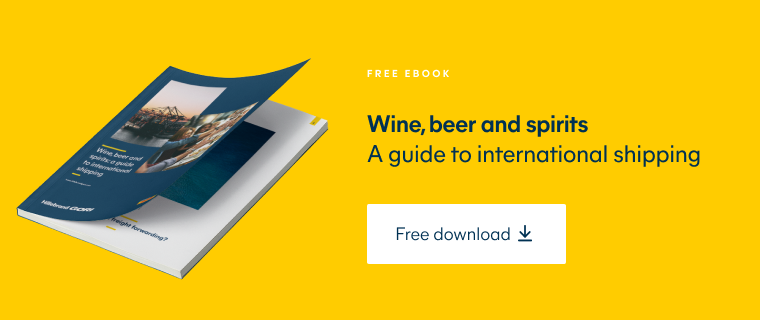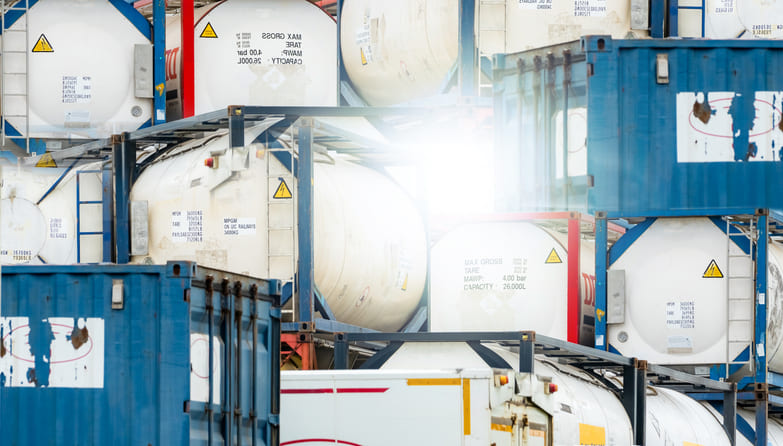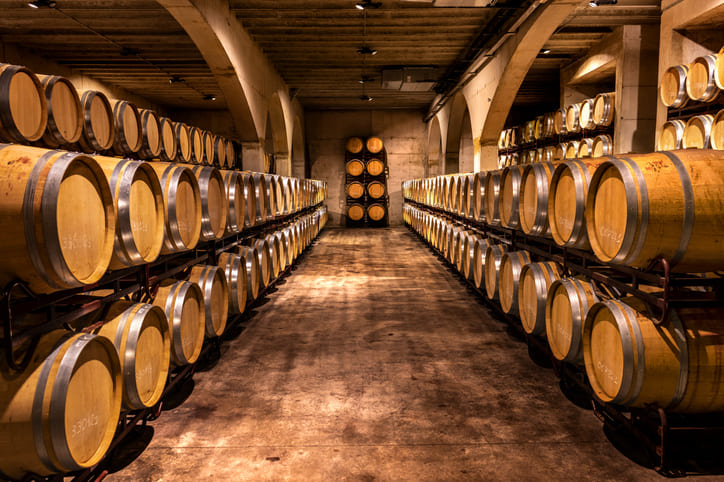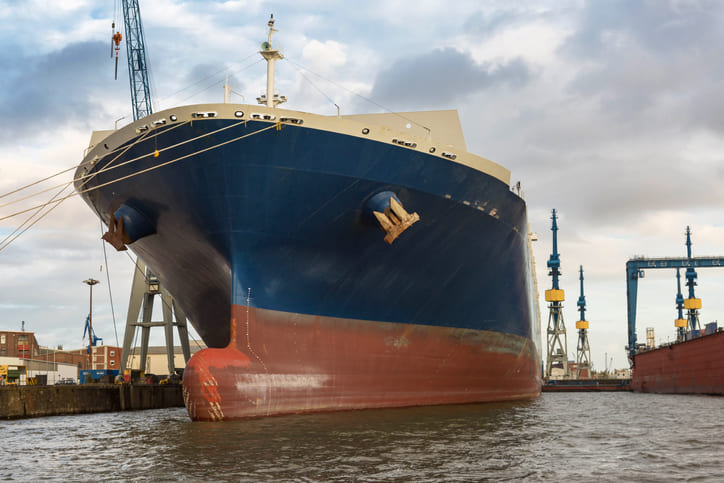Share this post
3PL vs 4PL: Choosing the Right Logistics Solution
If you find logistics terminology confusing, you’re not alone!
This article explains 3PL vs 4PL in terms anyone can understand. We also summarise 1PL, 2PL, and the latest arrival on the logistics scene, 5PL, so this crash course on understanding logistics companies covers all bases.
We go on to highlight the differences between 3PL and 4PL logistics, as these definitions are frequently mixed up and used interchangeably (there’s a reason for this, as we’ll clarify). Finally, we’ll help you understand how to choose between 3PL vs 4PL by listing the key advantages of each, to make this important logistics decision easier.
What does ‘PL’ stand for and what do the numbers mean?
PL stands for “party logistics.” “3PL” is an abbreviation of “third-party logistics.”
The numbers are a way to denote the extent to which the logistics services are outsourced in the supply chain and how many independent “logistics parties” are involved in providing the services (and who manages them). The lower numbers refer to direct services with fewer intermediaries, and the higher numbers imply more parties are being outsourced to.
Following this logic, 1 to 3 are linked to the physical operation, and from 4, management of the process is also included. 4PL is not better than 3PL. To determine that depends wholly on the needs of your company.
What is 1PL, 2PL, 3PL, 4PL and the new 5PL?
Another way to ask the question is who are 3PL, 4PL and the rest of the PLs? What services do each logistics company offer?
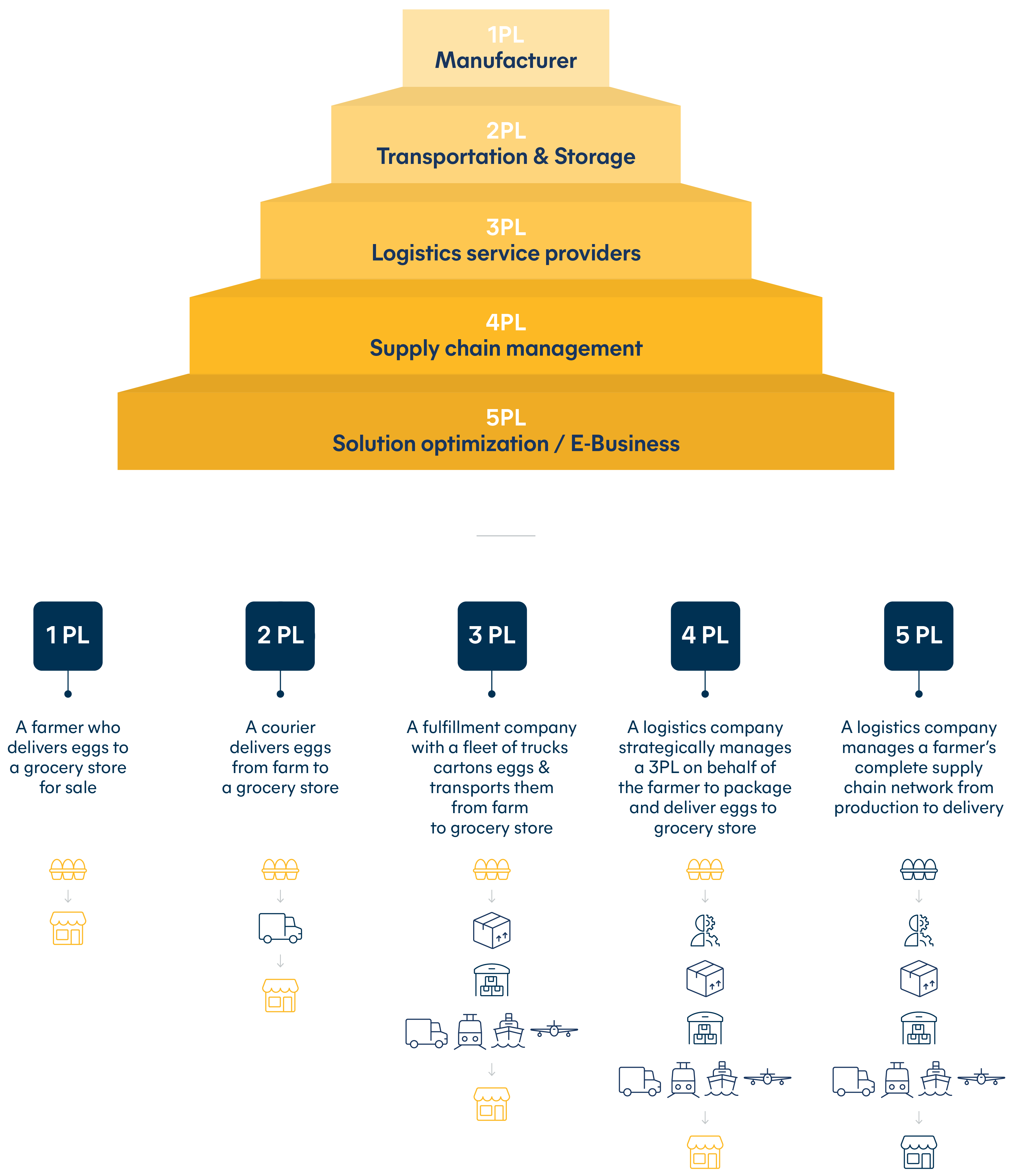
- 1PL - First-party logistics: The simplest of them all, a first-party logistics company (a 1PL), typically owns or hires their own vehicles to send or pick up their products. A 1PL can be a retailer picking up supplies or a manufacturer directly delivering goods to their customer. Only one party is directly involved in this supply chain: themselves.
- 2PL - Second-party logistics: If an enterprise owns assets like vehicles or warehouses, but uses these to deliver or handle goods for other companies, then this is described as second-party logistics (2PL). The company that hires a 2PL provider is still responsible for overall logistics and the customer experience. Examples of 2PLs include maritime shipping carriers, rail operators and truck companies. Two parties are now participating in this supply chain; the producer of the goods and the transportation (or other service) company.
- 3PL - Third-party logistics: Third-party logistics (3PL) providers take a step deeper into the supply chain. 3PLs can outsource transportation to specialist carriers (2PLs) while adding necessary secondary services, such as cargo storage, packing, cross-docking, customs brokerage, or freight forwarding. Third-party logistics refers to fulfilment companies, couriers or freight forwarders that act as a liaison between shippers and manufacturers. 3PLs oversee their own services and those of the 2PL they work with. Here, the customer defines what they want and ensures the correct execution of these processes. In this logistics model, there are three active parties in the supply chain; the manufacturer, the 3PL, and the 2PL that the 3PL manages. Makes sense?
- 4PL - Fourth-party logistics/lead logistics providers: Now it gets interesting. Fourth-party logistics oversee the entire supply chain. They’re known as lead logistics providers. A 4PL company has partnerships with several established 2PL or 3PL companies, which it manages alone without client input. A 4PL may own warehouses or a transportation fleet, or it may outsource these operations. 4PL providers are contracted when a manufacturer wants an external company to take care of every aspect of the logistics journey. Services offered by a 4PL include everything provided by a 3PL plus additional logistics strategy, carrier performance analysis, project management, freight sourcing strategies and more. This means that the customer now hands over part or all of the supply chain needs (this includes any leg of the logistics process) to a lead logistic party.
- 5PL - Fifth-party logistics: When various supply chains become an interconnected supply network, 5PLs enter the game. 5PL providers improve and optimise the efficiency of each part of the supply network, usually integrating tech or e-business aspects to automate processes, such as an e-commerce platform. There is debate about whether a 5PL is merely a 4PL with more advanced online services and a fancier title. A precise definition of 5PL has yet to be agreed upon. Many 3PLs can eventually morph into 4PLs, and 4PLs can evolve into 5PLs. Although the last sentence you can find in several places, I disagree, it can happen but there is no logic behind, even a 4PL can have data integrity problems if acting in more than one role at the same, being 3PL, 4PL or 5PL.
3PL vs 4PL, who wins?
In short, it depends entirely upon your company’s requirements and resources. The key questions to ask are:
- How much control do I want to retain?
- How much can I handle alone?
- How much expertise do I have?
- How much flexibility do I need?
When to choose 3PL
Ninety percent of Fortune 500 companies turn to 3PL providers.
3PLs are ideal for when you want to outsource logistics services while still maintaining central control. While hiring a 3PL provider takes care of the moving and storing of cargo, it also requires steady work on your end, as the management side of the supply chain is wholly in your own hands.
If your company doesn’t have the staffing or expertise for this level of logistics management, it’s better to go with a 3PL provider.
Key advantages of 3PL:
- Retain supply chain control, including control over returned orders
- Decentralisation reduces risk
- Cheaper than 4PL
- More responsive logistics model than 4PL
- Better for small to medium-sized businesses
When to choose 4PL
4PL providers offer a higher level of consulting, communication and services, but it does mean signing over total control of the supply chain. This is often a good thing, leading to more efficient and cost-saving operations. After all, the goal of a good 4PL is to optimise your business. The best way to picture a 4PL is as a logistics partner rather than a logistics provider.
Key advantages of 4PL:
- Highly optimised operations all the way down the supply chain
- Single point of contact for all parties involved (often an online platform)
- No logistics effort or input required by you
- May run own fleet of trucks or warehouses, streamlining operations further
- Neutral; can and will manage any 3PLs that you are already using
- Better for medium to large-sized businesses
The overlap of 3PL vs 4PL logistics companies
As mentioned earlier, many 3PL companies define themselves as 4PLs, and vice versa. As integrated services and outsourcing solutions evolve, the lines between what constitutes a 3PL and a 4PL will remain blurred. In the end, perfect nomenclature isn’t crucial. What’s more important is to know exactly what services that logistics provider can carry out for your business.
Can’t decide between 3PL vs 4PL? Simplify your choice
Still not sure whether to opt for a 3PL or 4PL provider?
Confused about what a 3PL or 4PL logistics company really does?
Unsure which 3PL or 4PL services are best for you, or if it even fits with your infrastructure and budget?
Thankfully, there are companies that provide both 3PL and 4PL solutions.
Take the hassle out of differentiating and choosing altogether!
Hillebrand offers 3PL services where you remain an integral part of the supply chain, or you can leave every aspect of logistics management in our capable hands, and we’ll work together as partners in a 4PL context.
We make sure anything is possible. Talk to us to work out which of our logistics solutions fits your needs!

